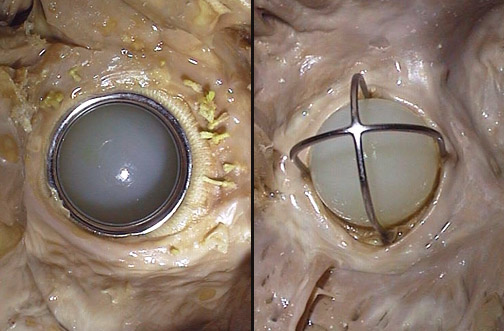|
A variety of problems can complicate prosthetic heart valves:
Thrombosis: this is a major potential problem with mechanical heart valves, requiring that the patient remain on anticoagulant therapy, though this will not entirely prevent thrombosis and subsequent embolization.
Infection: vegetations of infective endocarditis can develop on or around the prosthesis, and septic embolization can subsequently occur
Structural failure: this is a major problem with bioprostheses, because the leaflets tend to become stiff and calcify.
Dehiscence: seen mainly in the immediate postoperative period, dehiscence is separation of the prosthetic valve suture line from the heart, leading to paravalvular leakage
Disproportion: the prosthetic valve may not fit well in the heart, so that blood flow is not optimal.
|




